prune after bloom: barrow Parke, Heather Brand, Trisha holt
On view through November 13, 2021
Prune After Bloom brings together artists who explore gendered power dynamics that link desire, technology, bodies, and lived environments. Wallpaper designed by Barrow Parke evokes prehistoric handprints on cave interiors, indices of primordial desire to render the body as an image. Now, images put their virtual handprints on us: we live in hybrid virtual-physical worlds in which the body and its representations are fully intertwined. The phrase “Prune After Bloom” is a gardening aphorism espoused by Martha Stewart—a progenitor of the contemporary influencer celebrity—which refers to cutting off old flowers to promote new growth. Manipulating the plant to enhance its aesthetic impact is an apt metaphor for the ways in which we shape, curate, and document ourselves and surroundings, to both imitate and influence others. Through photography, drawing, weaving, and performance, Barrow Parke, Heather Brand, and Trisha Holt expose spaces—often domestic—where desire meets technologies of representation.
Trappings of domesticity loom large in Prune After Bloom. The pandemic confined many to the home, and in turn, the desire to live vicariously through others’ became more potent than ever. Trisha Holt engages with Influencer culture: her images represent women’s bodies isolated in domestic interiors, surrounded by facsimiles of desirable goods. Through a process of composing and re-photographing images, objects, and bodily fragments, she conveys the experience of seeing ourselves being seen. Heather Brand’s photographs picture screens playing lawn-care youtube tutorials or Martha Stewart videos, physically mediated by photoshop grids and artificial plants. Informed by human desire but largely non-human in their appearance, these abstracted worlds foreground the hybridity of our lived environments—comprising complex layers of technology, human intervention, and machine-manufactured landscape. The bulbous shapes on the surface of Barrow Parke’s woven paintings suggest finger swipes on a phone screen, traces of the desire to touch, create, embody, connect. With the deft integration of digital drawing, painting, and weaving in their work, Barrow Parke gesture back in time—to the 19th century technology of the loom, for example—to suggest that relationships between desire, technology, and representation are not new, but constantly reconfigured.
Prune After Bloom is supported in part by a grant from the Pennsylvania Council on the Arts, a state agency funded by the commonwealth of Pennsylvania and the National Endowment for the Arts.
installation views
barrow Parke
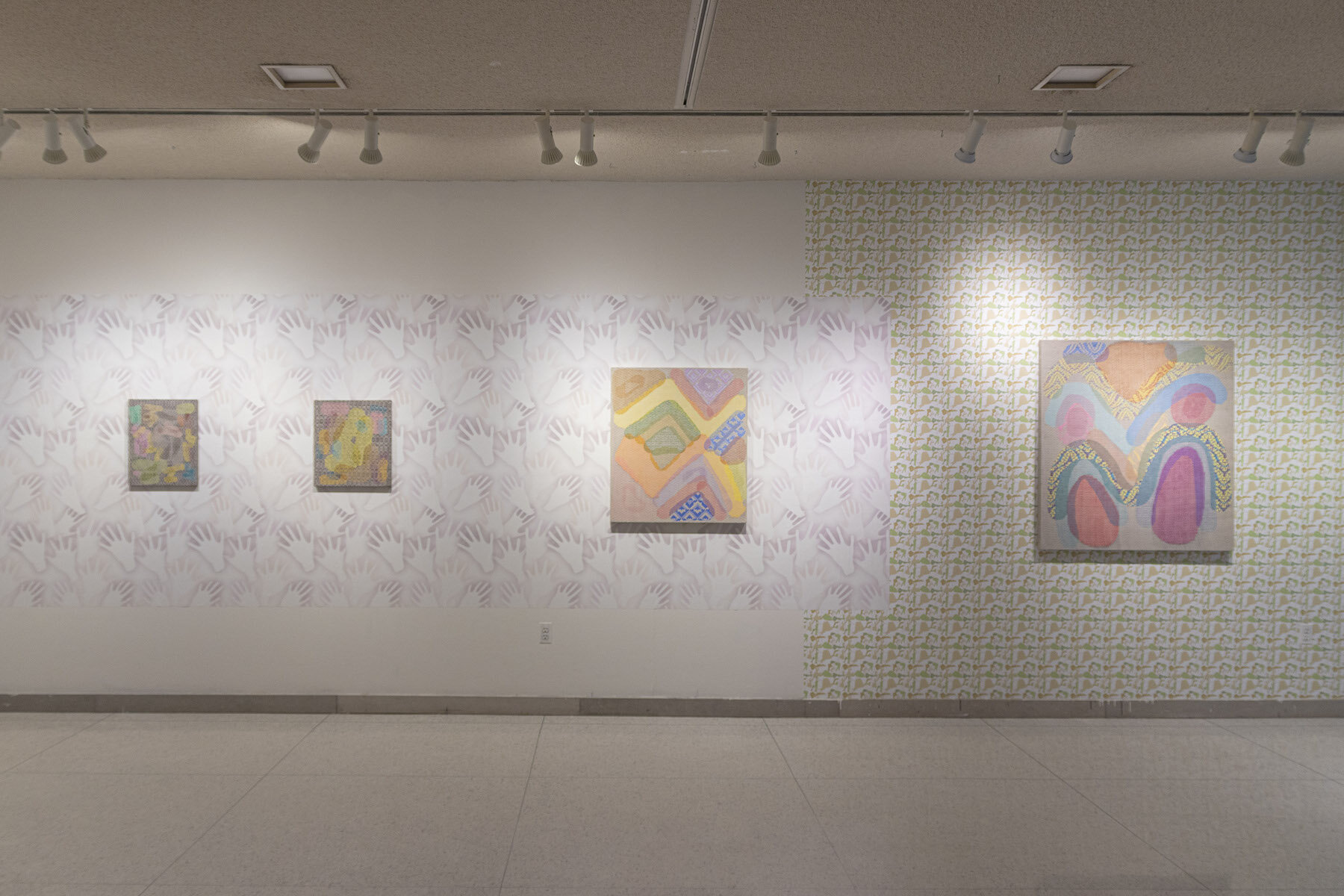
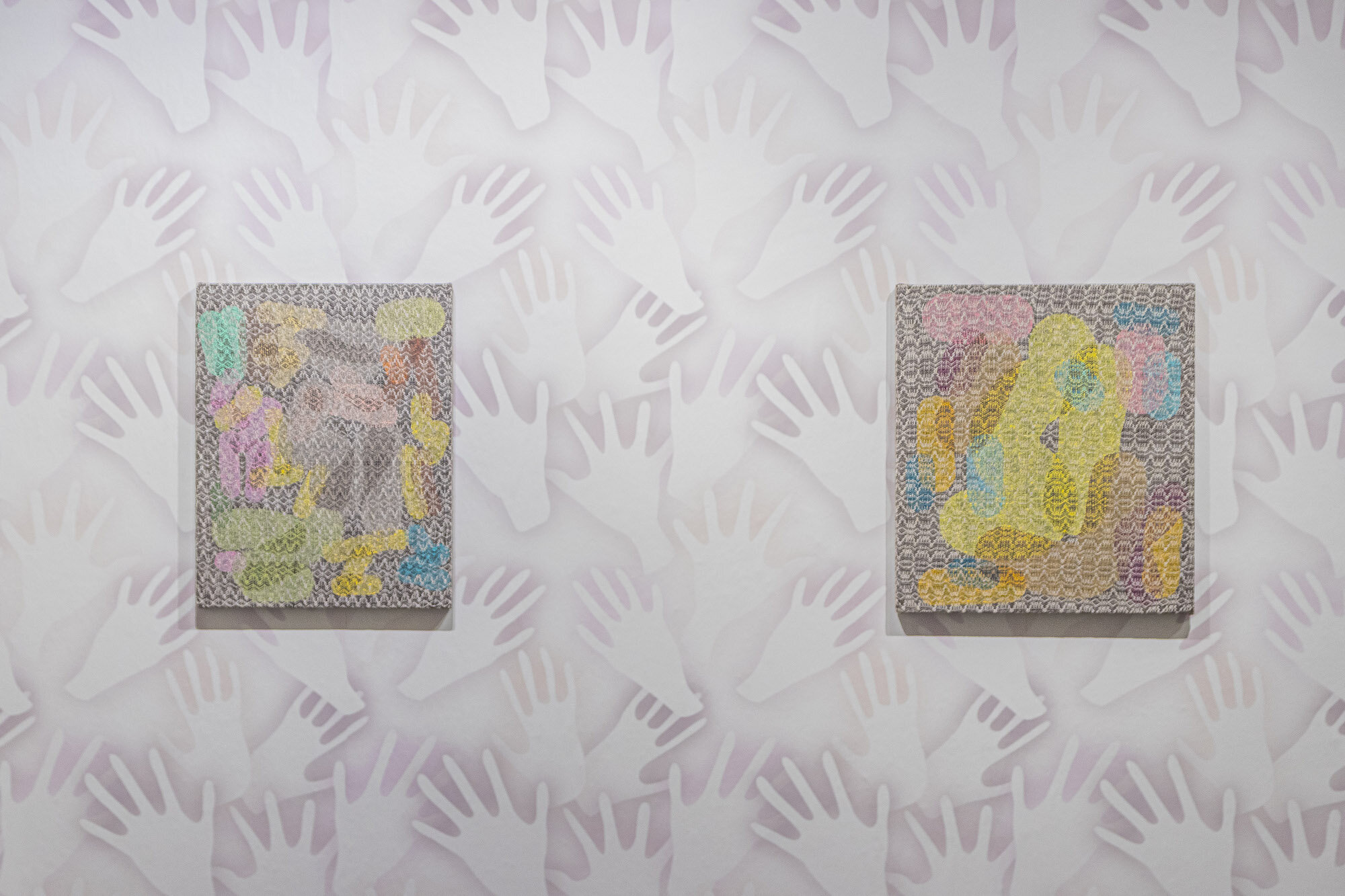
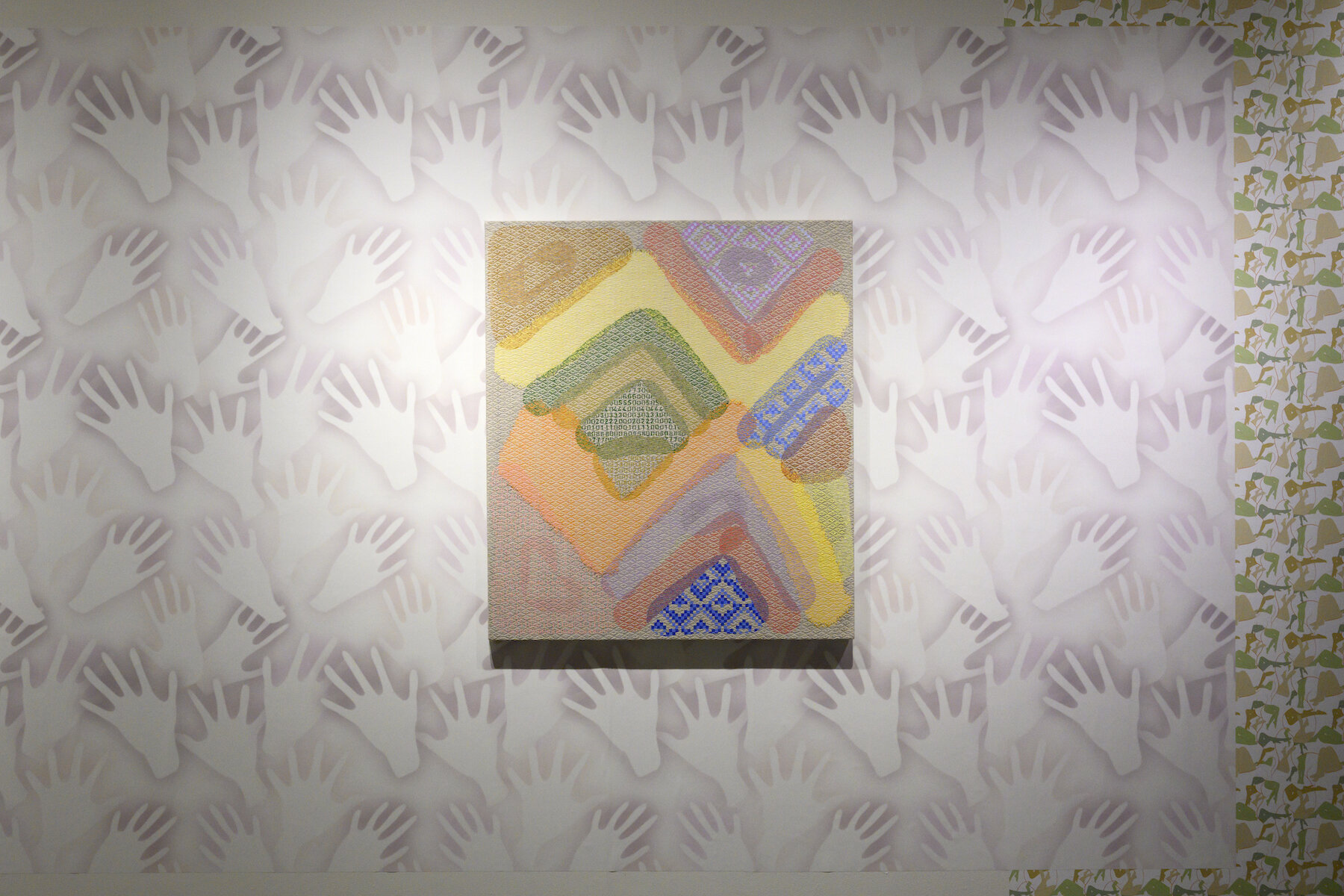
Exhibition wall text: Works by the collaborative team Barrow Parke (Mark Barrow and Sarah Parke) often begin with digital drawings on a phone or an iPad, using a simple app that records the fingers’ movements as bulbous lines. Parke then translates the digital composition into a woven textile, and Barrow paints on the fabric’s surface with a small brush—the size of a single weft thread—accentuating select elements of the textile’s inherent design. Moving away from conversations that pit craft and technology against one another, Barrow Parke’s work highlights affinities and overlaps. The Jacquard Loom, for example, with its punch card system that automated the execution of complex patterns, is an early nineteenth century pre-cursor to modern computing. Barrow Parke view the process of drawing with a finger on a digital screen as responding to the same impulse that motivated early humans to make handprints on cave walls, which the pair references in Hands, a custom designed wallpaper. On the adjacent Legs wallpaper, botanical forms—historically associated with fertility and regeneration— comingle with disembodied legs, a wry nod to the old phrase “she’s all legs.” In their visual elaboration on a phrase that objectified women, Barrow Parke consider the historically fraught relationships between gender, craft techniques, and the domestic sphere.
heather brand
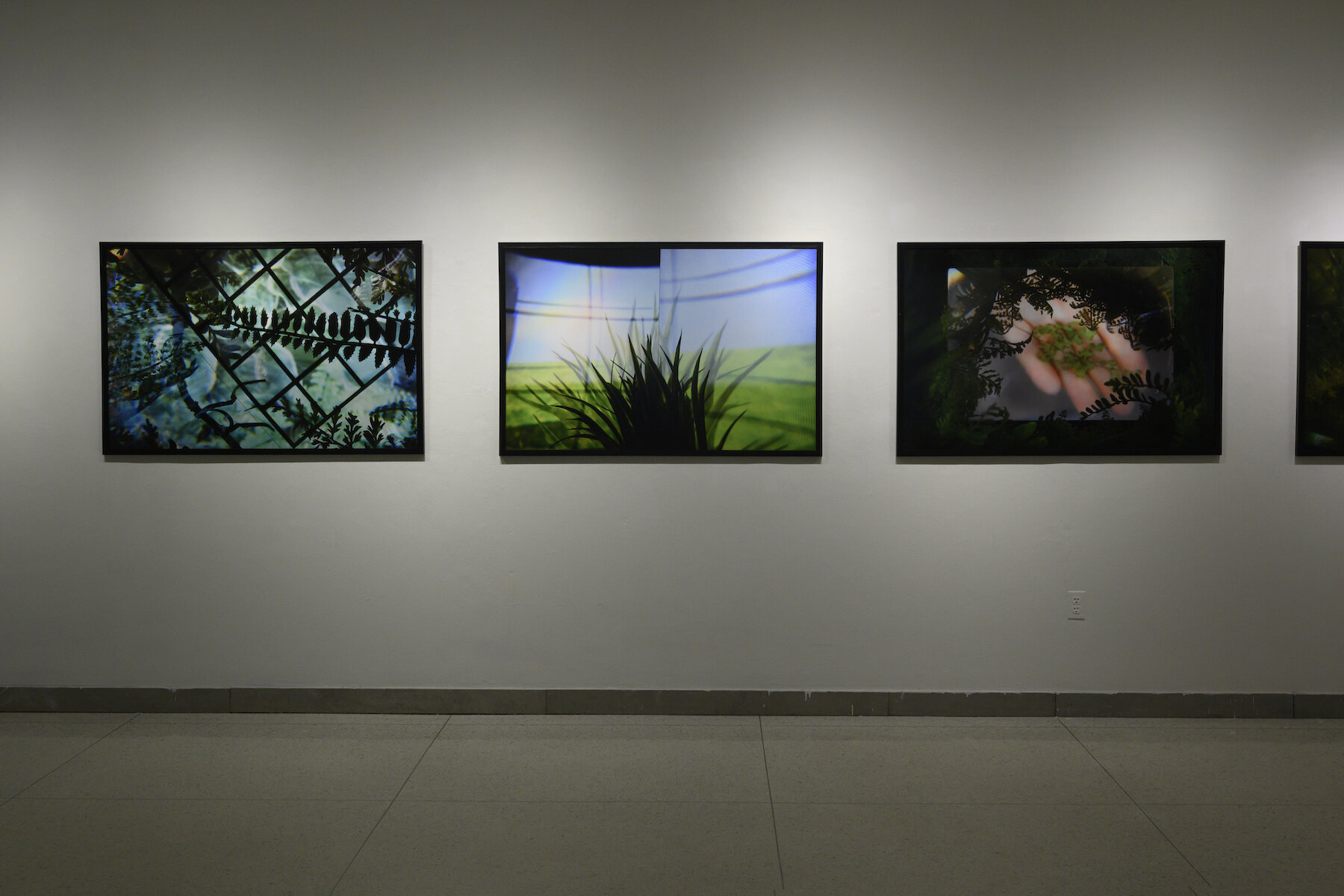
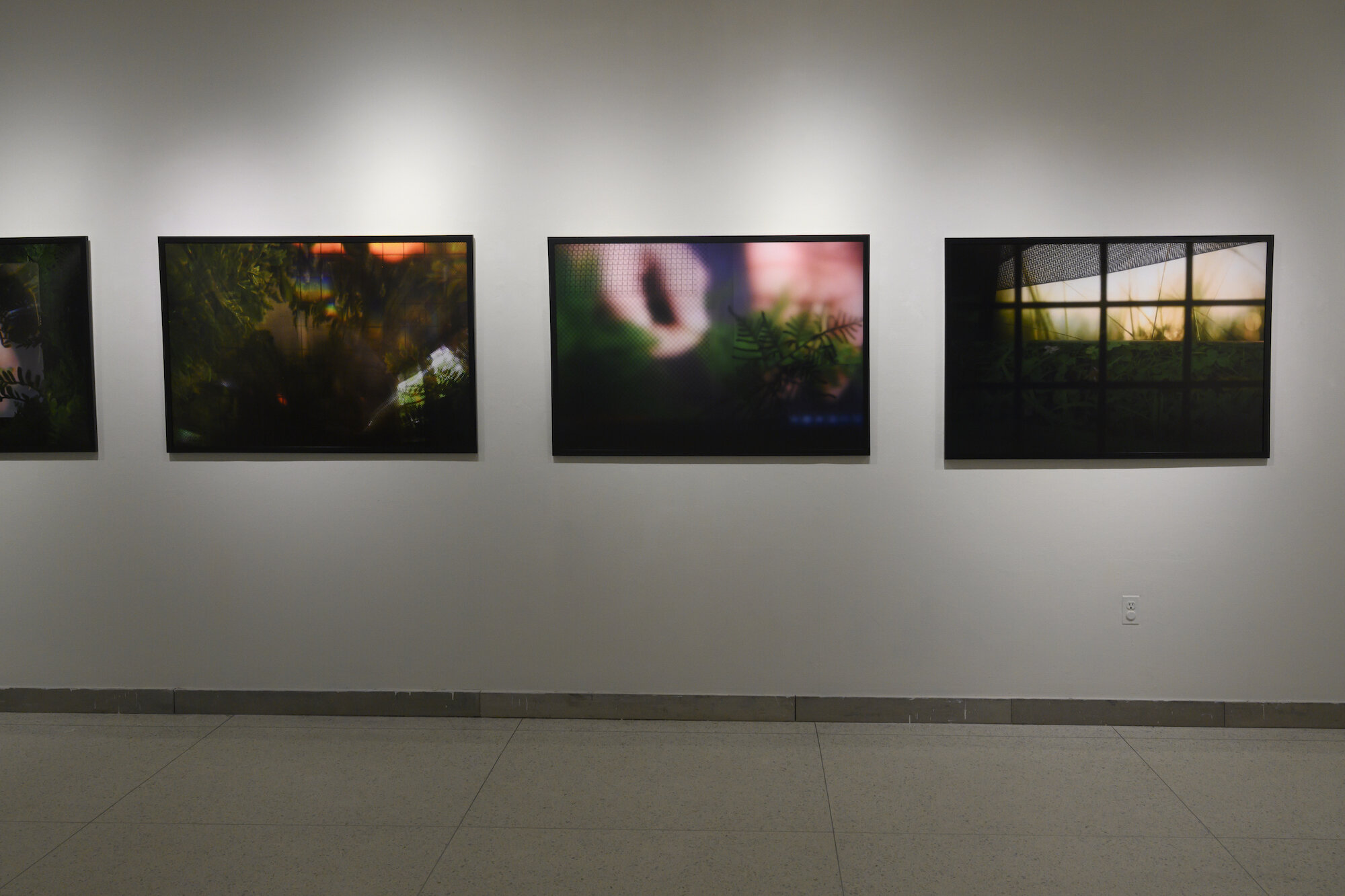

Exhibition wall text: In the series Close Enough, Heather Brand photographs screens playing Martha Stewart videos and YouTube lawn care tutorials, physically mediated by photoshop grids, magnifying sheets, and artificial plants. Dispensing instruction on gardening and fern propagation, Stewart coaches viewers to meticulously domesticate and shape elements of the natural world in order to optimize their lived environments. Likewise, lawn care YouTube demonstrates how to achieve coveted stripes and other patterns. In the midst of a pandemic when many have been confined to the home, the capacity for videos espousing aesthetic home improvement techniques to elicit feelings of longing and inadequacy may be more intense than usual. Brand is also cognizant of the gendered dynamics at play in the source material, with Stewart catering to an audience of mostly women, while the lawn care youtubers are predominately men. Informed by human desire, the photographs in Close Enough look largely non-human: the individuals in the videos are fragmented and buried in layered surface planes, blurs, and light distortions. These abstracted worlds foreground the hybridity of our lived environments, comprising technology, human intervention, and machine-manufactured landscape.
trisha holt
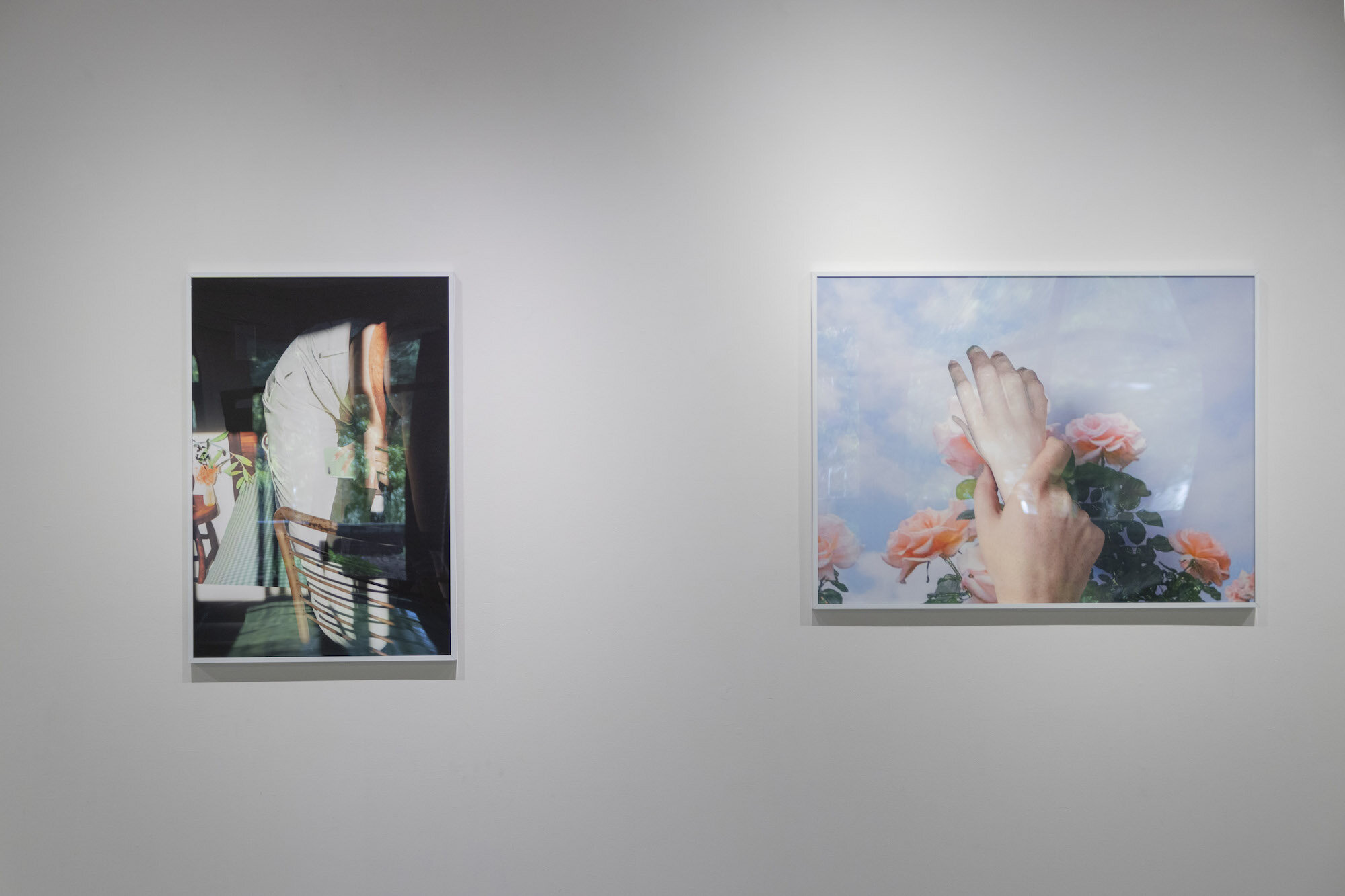
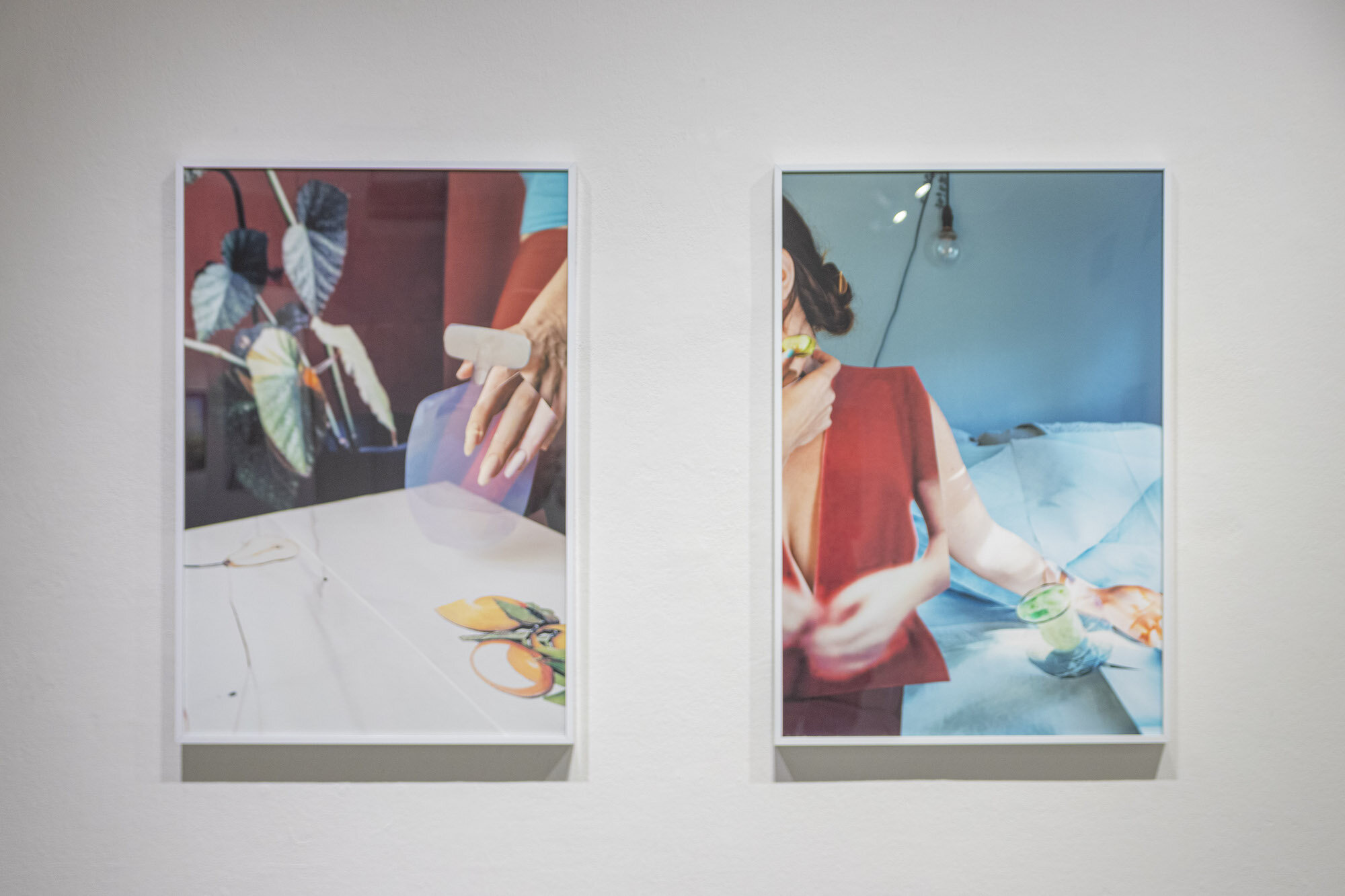
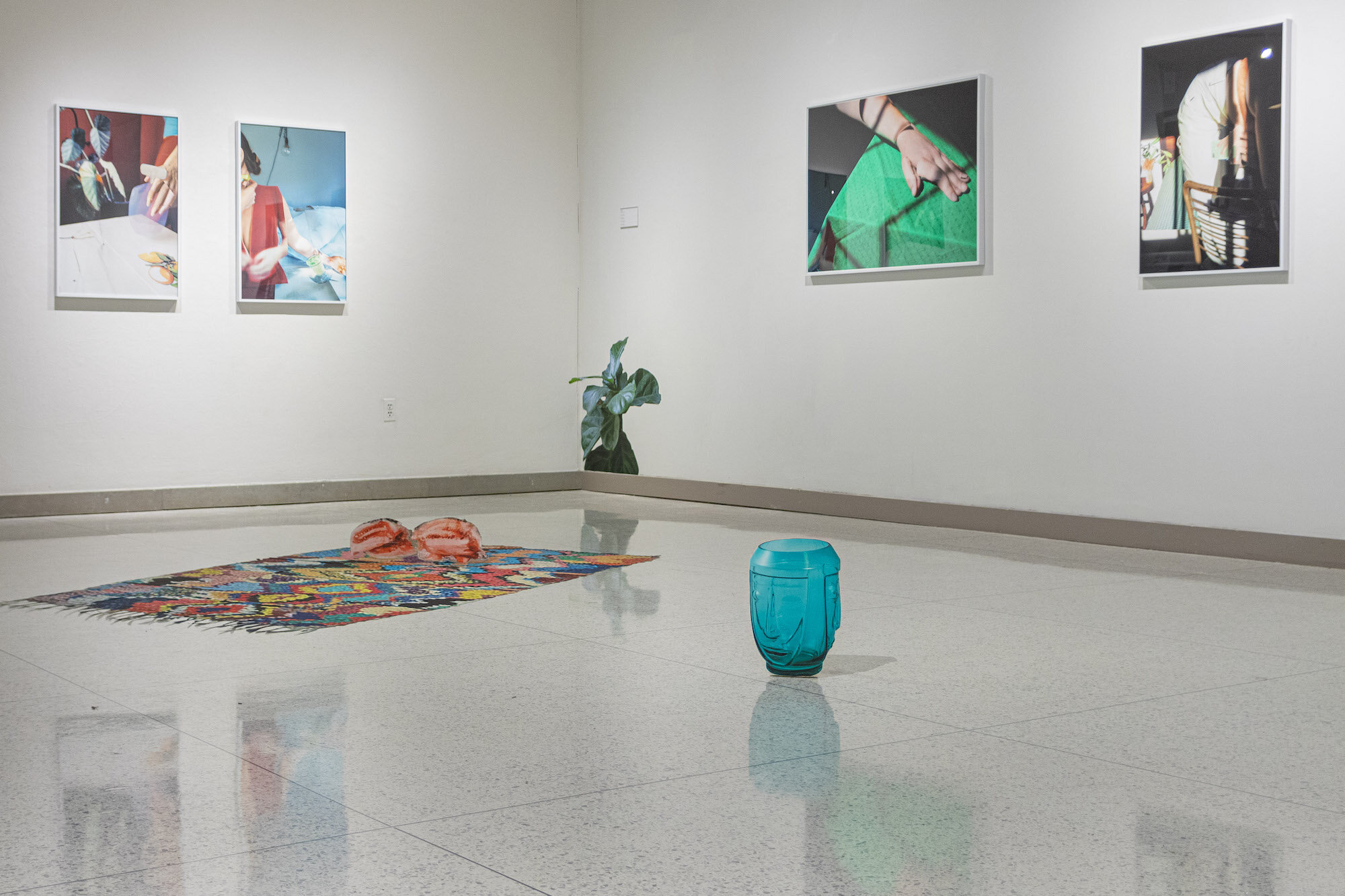
Exhibition wall text: Trisha Holt’s artistic practice explores the relationship between the body and object lust. In photographs on view from 2021—part of the Mirror series—Holt constructs domestic scenes featuring fragments of women’s bodies isolated amidst lush swaths of light, florals, fruit, and fabrics. Sustained looking reveals the objects to be facsimiles: flat photographic props collaged on and around the performer’s body. The artist uses found imagery from internet sources and prints them beyond their means. The resulting distortions foreground the emptiness of the online images that incite desire. Devoid of substance, they are merely pixels. Select printed props inhabit the galleries in Prune After Bloom, strange and funny objects that appear to have migrated from a digital domestic fantasy to the austere institutional space of an art gallery. The ubiquitous presence of hands—holding, propping, pushing—lends a visceral quality to the work. The intricate layering of corporeal body parts with digitally derived objects suggests that there is no longer any divide between physical and screen-based worlds.







